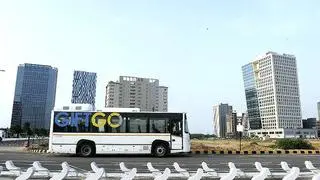If the government accepts the suggestion made by Chief Economic Advisor Krishnamurthy Subramanian and opts for bulk procurement of drugs, it will bring down the prices of those drugs.
The government’s bid to impose price controls on drugs backfires when such drugs become costlier, over the years, than those whose prices are left to the mercy of the market forces.
Effective intervention
The Economic Survey 2019-20 has mooted for the government — a major buyer of drugs — to plan bulk procurement. It urges the government to intervene more effectively to provide affordable drugs by combining all its purchases and exercising its bargaining power.
The Drug Price Control Order (DPCO), 2013, does more harm than good, according to the latest Economic Survey.
The DPCO comes under the Essential Commodities Act (ECA), which the survey has termed “anachronistic,” but experts argue that there have been benefits for public from DPCO.
‘Lopsided’
“The analysis seems lopsided as the survey has not spelt out the good the DPCO brings about, especially the invoking of Paragraph 19 by the National Pharmaceutical Pricing Authority (NPPA) to control prices of expensive drugs, or slash them, in case of cardiac stents, orthopaedic implants, costly cancer drugs, etc,” said Malini Aisola, Co-convenor, All India Drug Action Network (AIDAN).
The DPCO, for instance, contains 680 scheduled drug formulations spread across 27 therapeutic groups whose prices are regulated. Data analysed by a private agency, IMS Health, for 1,751 formulations and 49,893 brands show that prices of drugs that came under DPCO increased on average by ₹71 per mg of the active ingredient, whereas for drugs that were unaffected by DPCO, the prices increased by ₹13 per mg of the active ingredient.
Prices of those formulations under price control and sold in hospitals increased as much as ₹99 per mg, while those formulations which were not under price control and sold in hospitals, increased by only ₹25 per mg.
The Economic Survey estimates show that the DPCO increased prices by 21 per cent for cheaper formulations; however, in case of costly formulations, the increase was about 2.4 times (more than double). “The effect of DPCO, 2013 in increasing prices was therefore more potent for more expensive formulations than for cheaper ones — reinforcing the effect opposite to what it was instituted for, which is making drugs affordable,” the survey said.
For example, both Glycomet (Metformin), which is under price control, and Glimiprex-MF (Glimepiride + Metformin), which is not under price control, are used for controlling high blood sugar. In 2009, Glycomet’s price per tablet was ₹1.2, which rose to ₹4-4.5 in 2015. However, Glimiprex-MF which was not under price control and stood at ₹1.4 per tablet in 2009 rose to ₹3.5 in 2015.
“The two brands are from different companies — USV and Aristo. Pricing is a result of many factors — competition, position in the market, status of the company and it’s business strategy. One cannot simply compare two brands like this. It is a red herring; it means nothing. The size of the market is also a determinant,” Aisola commented.
Price limit
Price control is imposed by deciding an upper limit at which a drug can be sold, after deriving a market average for determining the Minimum Retail Price. “The price of Glycomet actually increased more than that for Glimiprex-MF after DPCO,” the survey analysis states.
The analysis also noted that the prices of drugs mostly sold through hospitals increased, but the prices decreased mildly in case of drugs sold through retail chemists. “This effect of price control on drugs is expected because the enforcement of the DPCO orders would be easier in case of retail outlets... (than) hospitals,” the survey notes.








Comments
Comments have to be in English, and in full sentences. They cannot be abusive or personal. Please abide by our community guidelines for posting your comments.
We have migrated to a new commenting platform. If you are already a registered user of TheHindu Businessline and logged in, you may continue to engage with our articles. If you do not have an account please register and login to post comments. Users can access their older comments by logging into their accounts on Vuukle.